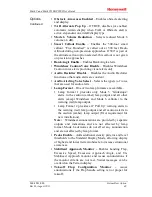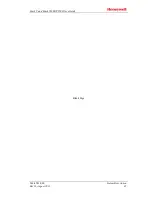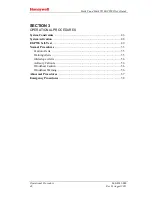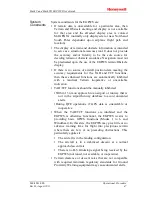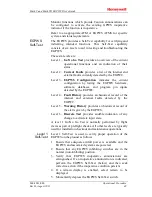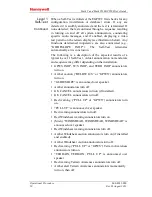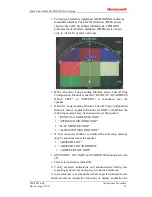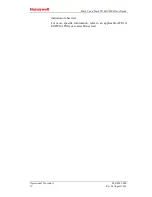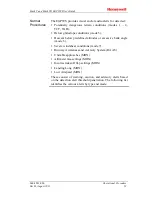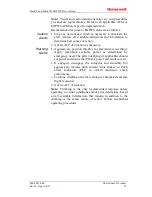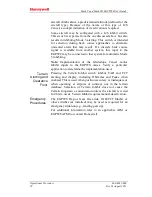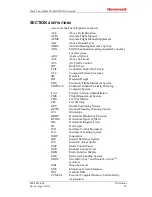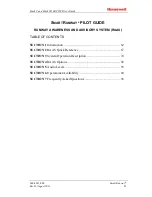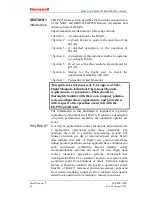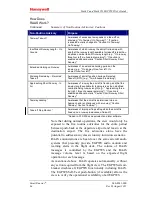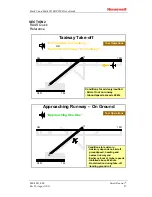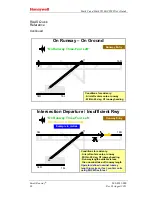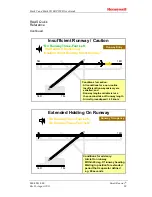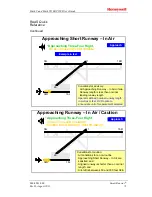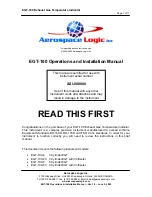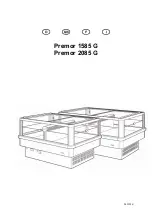
Mark V and Mark VII EGPWS Pilot’s Guide
Operational Procedure
060-4241-000
56
Rev H, August 2011
Warning
Alerts
Note:
Navigation must not be based on the use of the Terrain
Awareness and Alerting Display (TAD).
Glideslope
Alerts
Below Glideslope alerts consist of “soft” and “hard” alerts
based on the degree of glideslope deviation and altitude.
Respond to these alerts as necessary to correct the aircraft’s
flightpath back to the Glideslope centerline or perform a
missed approach.
Advisory
Callouts
Advisory callouts being advisory in nature are used to
announce an event or condition (e.g., “Minimums”,
"RunwayXX" - if RAAS enabled).
Response to these callouts should be in accordance with
standard operating procedures.
Windshear
Caution
This alert generally occurs due to increasing performance
windshear conditions (i.e., increasing headwind, decreasing
tailwind, and/or updraft). This alert is generally considered
advisory in that the crew response is to be alert to the
possibility of subsequent significant airspeed loss and down
draft conditions. Coupled with other weather factors, the
Windshear Caution should be considered in determining the
advisability of performing a go-around.
Wind and gust allowances should be added to the approach
speed, increasing thrust if necessary. It may be necessary to
disengage autopilot or auto-throttle. Avoid getting low on the
approach glidepath or reducing the throttles to idle.
Windshear
Warning
When a Windshear warning occurs, the following procedures
should be followed:
1. Immediately initiate the Windshear escape maneuver in
accordance with established Windshear procedures.
2. Aggressively apply maximum rated thrust, disengage
autopilot and/or auto-throttle if necessary.
3. Rotate smoothly to the go-around/take-off pitch attitude,
allowing airspeed to decrease if necessary. Maintain wings
level. Do not retract flaps or landing gear.
4. If the aircraft continues to descend, increase pitch attitude
smoothly and in small increments, bleeding air speed as
necessary to stop descent. Use Stall Warning onset (stick
shaker) as the upper limit of pitch attitude.
5. Maintain escape attitude and thrust and delay retracting
flaps or landing gear until safe climb-out is assured.
Note:
Engine overboost should be avoided unless the
airplane continues to descend and airplane safety is in doubt.
Summary of Contents for EGPWS MK V
Page 1: ...FILE ONLY Release 08 Aug 2011 14 50 02 MST Printed on 01 Mar 2013 ...
Page 2: ......
Page 4: ......
Page 124: ...Mark V and Mark VII EGPWS Pilot s Guide 060 4241 000 118 Rev H August 2011 ...
Page 125: ......


